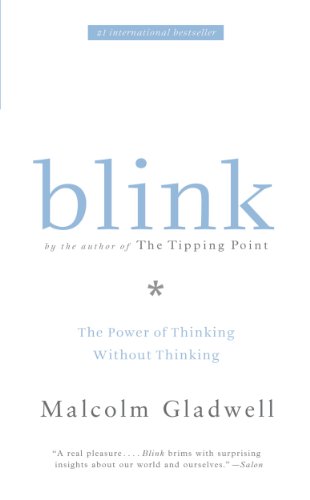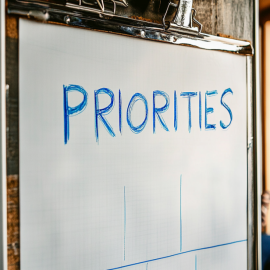

This article is an excerpt from the Shortform summary of "Blink" by Malcolm Gladwell. Shortform has the world's best summaries of books you should be reading.
Like this article? Sign up for a free trial here .
Do you ever make decisions on the fly, without taking the time to consider their potential consequences? Can snap decisions—decisions made by the unconscious mind—be better than decisions made with deliberation?
Throughout our lives, we’ve been taught that our decisions are sounder if a lot of time and effort has gone into making them. But unconscious decisions can actually be just as good as—or even better than—the decisions that we make by analyzing a situation carefully.
Learn about the benefits of unconscious decision-making and how snap decisions work in the brain.
The Benefits of Snap Decisions
Gladwell believes there are two primary benefits of snap decisions:
- They’re quick
- They’re unconscious
The value of speed is obvious in situations in which there’s no time to think things through. EMTs, firefighters, and police officers make snap decisions all the time. But even though we don’t realize it, we’re all making snap decisions constantly, and we all find ourselves in situations where time is limited and we need to act quickly.
The Advantages of Deciding With the Unconscious Mind
In addition to being speedy, snap decisions are unconscious. Unconscious decision-making frees up the conscious mind to focus on problems that need our deliberate attention.
How Snap Decisions Work in the Brain
Gladwell explains that scientists can see how much work the unconscious mind does by observing people with damage to their ventromedial prefrontal cortex, which is one area of the brain involved in unconscious decisions.
As Gladwell points out, people with ventromedial damage can’t make snap judgments. Their unconscious minds don’t prioritize information for them, so they give equal weight to minor and major details when making a decision. People with ventromedial damage can spend hours sifting through options before making a trivial decision, such as when to schedule their next appointment.
(Shortform note: Not all researchers working with ventromedial patients have found the same thing. In fact, it seems more common for people with ventromedial damage to make decisions as quickly as controls but to be wildly inconsistent in their preferences. For example, in their choice of preferred foods, they might rate doughnuts as tastier than carrot sticks and carrot sticks as tastier than watermelon, but then say that watermelon is tastier than doughnuts.)
People with ventromedial damage also have trouble turning decisions into actions. They’re highly rational thinkers and don’t involve their emotions when making decisions. This seems like a good thing, as we’re often told to leave our emotions out of the decision-making process. But we need an emotional push to get from decisions to actions. Without emotions, we may intellectually know that something is bad for us, but we’ll keep doing it anyway.
As Gladwell argues, working with less information means that you’re less likely to be distracted by irrelevant details. If you let your unconscious mind do its job without interfering too much, you get decisions that are clean, fast, and surprisingly accurate.
Gladwell introduces the idea of “thin-slicing” to explain why our unconscious minds are so efficient at making snap judgments. Thin-slicing is using a small segment of information (for example, a 10-second video) to make a quick decision. As evidence that it works, Gladwell describes a study by Nalini Ambady and Robert Rosenthal that looked at student evaluations of teachers. These researchers found no significant difference between the evaluations of students who had taken a whole semester-long class with the teacher and those who had watched a video of less than 30 seconds of the same teacher.
(Shortform note: Gladwell doesn’t attribute the term “thin-slicing” to anyone in particular, and he’s often credited with coining it. But the idea of taking “thin slices” of experience comes from a 1992 paper by Ambady and Rosenthal that reviewed research on how people interpret short segments of non-verbal behavior. They showed that people who made judgments about someone’s honesty and professional competence based on a 30-second video were just as accurate as those who watched a 5-minute video.)
| Thin-Slicing Offers Insights into Human Behavior Research interest in thin-slicing has spread to many fields, including interpersonal relationships, clinical evaluations, parenting, and the legal system. There’s also considerable overlap with studies of body language—for example, researchers have found that we can accurately judge someone’s socioeconomic status based on thin slices of their body language. We do this by looking at the degree to which they show engagement with others: “Engagement cues,” such as nodding and smiling, tend to reflect low socioeconomic status, while people with higher socioeconomic status are more likely to show “disengagement cues” such as doodling. In general, you’ll be judged more positively on first impression if you make eye contact, avoid fidgeting, smile, and make open-handed gestures. A stiff posture, frowning, and looking down will lead people to judge you negatively. Researchers are even trying to link how we appear in thin-slicing judgments to our genes. For example, one recent study found that people who are genetically predisposed to have more active oxytocin receptors are more likely to express prosocial behavior and positive body language (e.g., nodding their heads and smiling). This in turn makes people judge them more positively when thin-slicing. |
Thin-Slicing Example: Gottman’s “Love Lab”
Gladwell introduces psychologist John Gottman’s “love lab” as an analogy for what’s happening in our brains when we thin-slice. Since the 1980s, more than 3,000 married couples have taken part in Gottman’s research at the University of Washington. Gottman’s work suggests that if you know how to “thin-slice” a marriage—that is, if you know which information is relevant and which isn’t—you can accurately predict the future of the marriage.
Gottman and his colleagues videotape couples having a “meaningful interaction,” perhaps discussing a point of contention or talking about how they met. They also hook the subjects up to sensors that take physiological measurements.
(Shortform note: Some researchers have argued that Gottman’s sample sizes are too small to be meaningful, and that his studies don’t take into account false positives due to the low base rates of divorce. Others have questioned whether what Gottman does can be called “prediction” at all. He apparently makes his predictions after he already knows the outcomes of participants’ marriages, using technology to match the outcome with the noted patterns to create predictions in hindsight. Gottman has disputed this interpretation of his work on the Gottman Institute website.)
The way Gottman zeroes in on the most important pieces of information is similar to what our unconscious minds do when they thin-slice. A well-trained unconscious mind lasers in on the most significant details and disregards the rest. This is why thin-slicing allows for speedy decision-making, since it doesn’t involve processing a lot of information.
| Do We Thin-Slice Potential Romantic Partners? Gottman thin-slices long-term relationships to gain insights into their history, but what about the thin-slicing that we engage in when screening potential new partners? Tinder wasn’t around when Gladwell wrote Blink, but it’s a textbook example of making fast decisions based on very little information. Researchers haven’t investigated thin-slicing behavior on Tinder, but they have looked at what happens in speed dating sessions. Speed dating, which was invented in the late 1990s by Rabbi Yaacov Deyo to help connect Jewish singles in Los Angeles, is an ideal context for thin-slicing studies. For example, researchers found that female speed daters (in a heterosexual speed dating scenario) were faster than the males to notice negative qualities in their dates. In another study, researchers compared the qualities that people said they were looking for before the speed dates with the partners they actually chose to see again, finding that we’re not very good at identifying what we like in people until we meet them—perhaps a reason to give someone a chance if you’re sitting on the fence. |
———End of Preview———

Like what you just read? Read the rest of the world's best summary of "Blink" at Shortform . Learn the book's critical concepts in 20 minutes or less .
Here's what you'll find in our full Blink summary :
- How you can tell if a marriage will fail, within 3 minutes
- Why your first impressions are usually surprisingly accurate
- The dark side to making first impressions, and how to avoid the,






